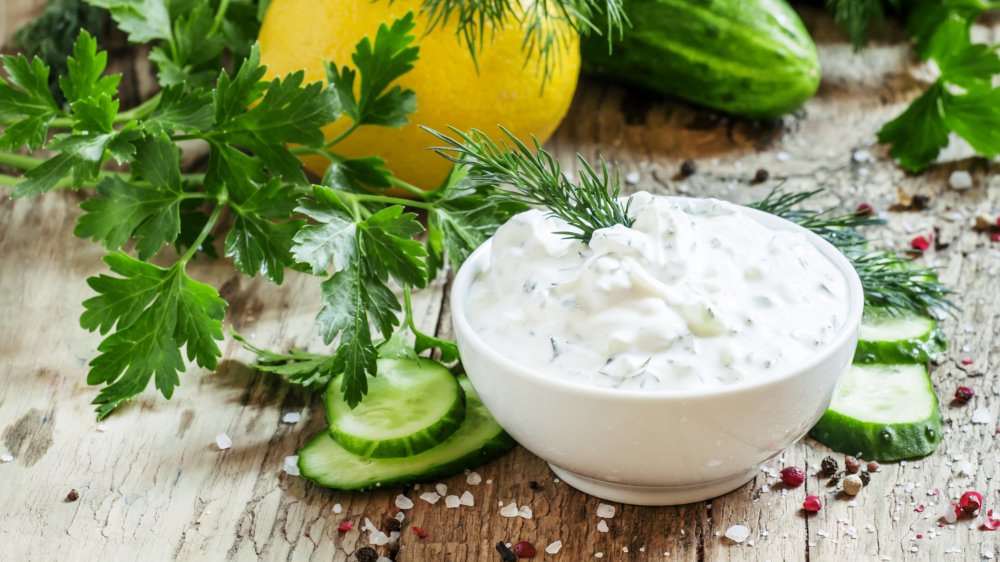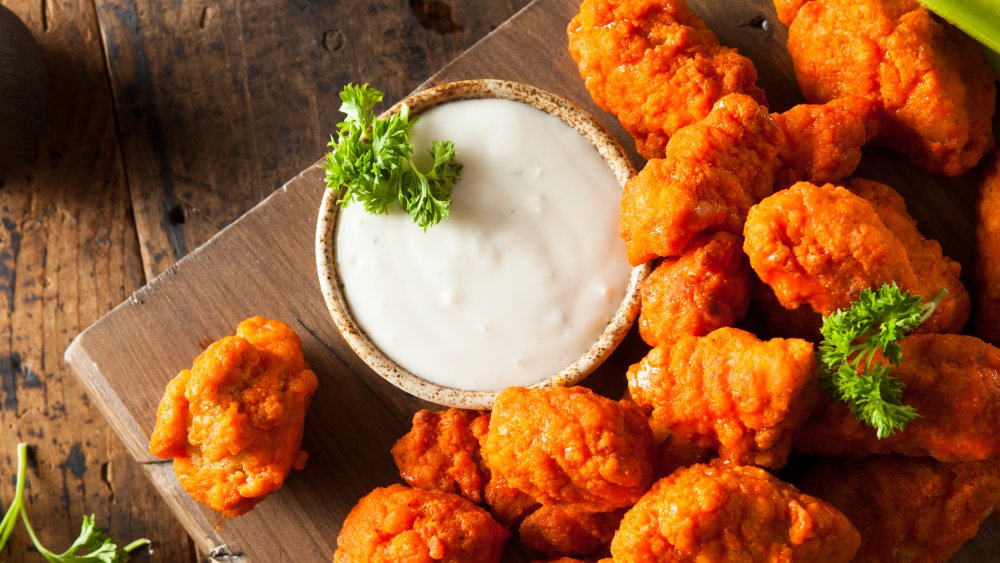This Is Where The Flavor Of Ranch Dressing Comes From
Ranch dressing might not be one of the five mother sauces, but for many people, it might stand a decent chance at replacing at least one of them. Ranch is everywhere from Cool Ranch Doritos to pizza, and its cool, tangy richness is so all-encompassing that only everyday condiment staples like ketchup and BBQ sauce can compete with its goes-with-everything popularity.
According to the New York Times, ranch dressing gets its signature taste from three distinct, yet equally important elements: Creaminess, herbs, and allium (that is, onions and garlic). The cream base can be various things, from sour cream to buttermilk and mayo. The herb mix tends to include things like dill, parsley, and thyme. The sauce is also seasoned to give it those precious flecks of extra taste.
But how exactly do those things join together to give that all-permeating, flavor-boosting taste ranch is so famous for? What is the magic trick that gives this beloved dressing its signature deliciousness? Let's take a look at where the flavor of ranch dressing comes from.
Dry ingredients are the key for that classic ranch taste
Sure, you can make a delicious, refreshing ranch-style dip using prime ingredients like freshly pressed garlic and lush, green herbs. However, the end result probably won't have that specific, traditional tang we associate with ranch dressing. For the true original, you need to avoid perishable ingredients and go for the dry and powdered versions, in order to create a spice mix that will then be combined with the creamy component. The New York Times suggests garlic powder, onion powder, dried herbs, powdered pepper, and buttermilk.
The OG ranch dressing mix is the brainchild of Steve Henson, who concocted it from the dry ingredients available to him while working in Anchorage, AK. in 1950. Henson's dry mix proved popular enough that he and his wife set up the Hidden Valley Ranch company to peddle the product. When they couldn't keep up with the demand, they started packing portions of the mix in easily distributed envelopes — not unlike the Dips Mix dry mix packets you can buy today.
Though the recipe has been tweaked since the early days, it hasn't exactly stopped ranch from becoming the dressing juggernaut it is today.

